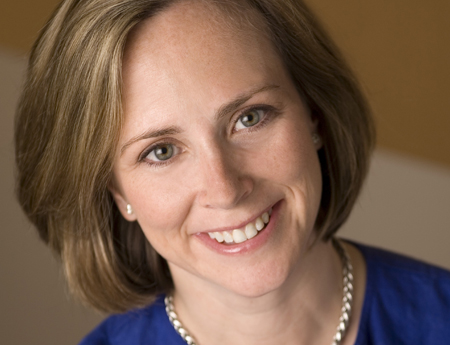Addressable Ads Move to the Forefront

Usually seen as something remaining a few years away, addressable advertising has finally arrived. It has even had its own upfront.
Late last year, Starcom MediaVest Group brought together nine of its clients to buy a year’s worth of addressable ad inventory from the four distributors who can deliver ads on an individual household basis—Dish Network, DirecTV, Comcast and Cablevision Systems. SMG called it a “Forefront,” a term that joins upfront, Infront, AllFront and New-Front in the media buyer’s lexicon.
The clients—including Kraft, ConAgra Foods and Allstate—brought what Tracey Scheppach, executive VP for precision video at SMG, described as “tens of millions” of dollars to the table. “We went to the four and we said we have a pool of money and for that we are looking for best-in-class pricing and access to data that helps our plans become accountable,” she says. “So we have accomplished that and now we’re in the process of executing all those campaigns.”
ConAgra Foods signed on with SMG’s Spark last year after running addressable ads with its previous agency. “When we found out they were pooling clients together in an upfront, we knew that would be a good opportunity for us to get some favorable pricing and some negotiations on data,” says Heather Dumford, global marketing director, media at ConAgra. “That was really why we wanted to participate, to use the leverage of Starcom as opposed to doing our buys more from an individual company perspective.”
Scheppach, a longtime advocate of addressable advertising, estimates that the addressable market will hit $200 million this year. “And that’s a marketplace that didn’t exist 18 months ago,” she says. “It’s all about precision, and addressable television is the ultimate in precision. This market is going to grow. It’s the future.”
“The market has become more interested in this sort of efficiency and effectiveness,” says Warren Schlichting, Dish Media Sales senior VP, adding Starcom’s not alone in pushing addressable, “but they’re certainly a leader.”
Dish soft launched addressable in 2012. It’s had fits and starts, Schlichting says, but now it’s a significant business. “Of all the products I’ve launched, this is the only one that exceeded expectations after year two,” he says.
The smarter way to stay on top of broadcasting and cable industry. Sign up below
Data is the key to advanced advertising, both to select and target the consumers a marketer wants to reach before a campaign runs. It’s also necessary to evaluate the campaign’s effectiveness and refine the target for future campaigns.
The data is controlled by the operators, but some new companies are finding ways to collect viewer data. “We’re starting to see some really unique ways to capture data and I think this whole next 18 months is an arms race for data,” Scheppach says.
Some of Starcom’s clients have already run addressable campaigns bought during the Forefront. Scheppach says that for those campaigns the effective CPM (cost per thousand viewers) to reach targeted consumers is 37% lower than national cable ad prices.
Though marketers are saving money with addressable advertising, Scheppach says those savings are being spent to beef up other TV marketing efforts. “I don’t see anyone pulling their budget back. Actually I see more money coming into TV campaigns.”
Addressing the Audience
ConAgra’s Dumford says addressable campaigns have helped identify core audiences and growth audiences for its brands and allowed the marketer to determine the optimum frequency for messaging them on TV.
For some brands with narrow target audiences, ConAgra will shift more dollars toward addressable. But for brands that everyone consumes, such as Orville Redenbacher popcorn, “we know the more efficient play of broad-reach media is going to get us the most bang for the buck,” Dumford says.
Schlichting says the data it can generate makes buying Dish more compelling and that more blue-chip advertisers are signing on. “All we’re looking for is to be included in buys where we haven’t been in the past,” he says.
To some degree, addressable advertising is limited because operators can only sell the two minutes per hour they get in their agreements with programmers. National commercials aren’t addressable yet.
Nevertheless, Scheppach sees plenty of opportunity of the next five years. “There’s a huge bucket of money to bring to television in direct mail, because the principals of addressable are very similar to the principals of direct mail. And that’s a $50 billion marketplace that their average price per mailer is $1 which translates to a $1,000 CPM,” she says. “It’s a huge market and all the pieces are falling together to where that money could start to migrate to television.”
Jon has been business editor of Broadcasting+Cable since 2010. He focuses on revenue-generating activities, including advertising and distribution, as well as executive intrigue and merger and acquisition activity. Just about any story is fair game, if a dollar sign can make its way into the article. Before B+C, Jon covered the industry for TVWeek, Cable World, Electronic Media, Advertising Age and The New York Post. A native New Yorker, Jon is hiding in plain sight in the suburbs of Chicago.

